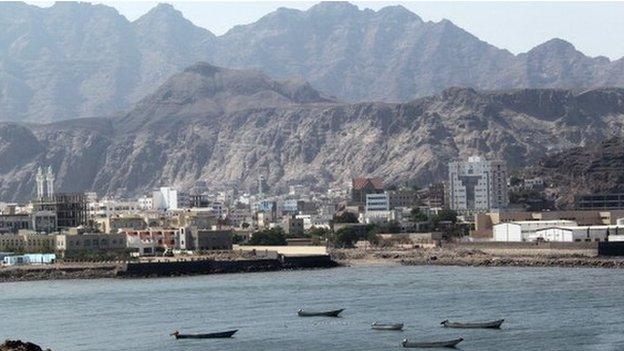Could weapons used in Paris attack reach UK?
- Published
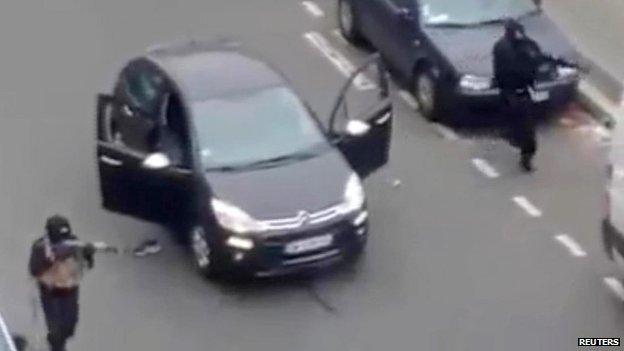
Said and Cherif Kouachi seen with their automatic weapons
Home Secretary Theresa May was explicit. Addressing MPs on Wednesday, she said the Paris attacks were enabled by the use of military assault weapons. These were "not unknown in the UK but extremely uncommon", she said.
So what exactly were these weapons that killed 17 people in such a short space of time, and what are the chances we could see a similar well-armed attack on our streets?
The two Kouachi brothers who attacked the offices of the Paris magazine Charlie Hebdo on 7 January, used as their primary weapons of choice, a modern derivative of the AK-47.
This has been a standard infantry weapon in dozens of countries and the firearm of choice by insurgents, revolutionaries and terrorists all over the world since the 1960s.
With a high rate of fire and a 30-round magazine, these weapons can be devastating at close range. AKs were used by the attackers in both the Mumbai siege of 2008 and the Westgate siege in Nairobi in 2013.
They are also far more powerful than anything carried by the gendarmes who confronted the gunmen as they left the Charlie Hebdo office after killing 10 people inside.
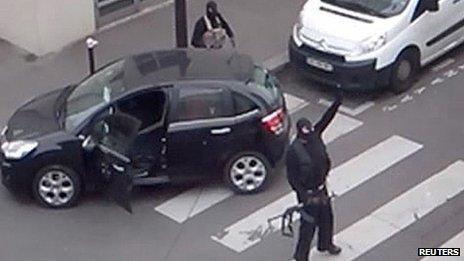
The Kouachi brothers gesture as they return to their car after the attack outside the offices of French satirical weekly newspaper Charlie Hebdo
Amateur footage taken from a nearby rooftop shows the police car beating a hasty retreat and reversing down the street once its occupants realised they were outgunned.
The Kouachis shot dead two policemen before fleeing north to a suburb where they were eventually killed by police snipers from the French Counter Terrorism unit, GIGN.
As well as the assault rifles carried by Cherif and Said Kouachi, the two men were armed with an M82 grenade launcher, grenades and at least one Tokarev pistol. Their accomplice Amedy Coulibaly used a Czech-made Scorpion sub-machine gun, a popular weapon in the criminal underworld.
France has strict laws forbidding private ownership of such automatic weapons yet illegal weapons are depressingly easy to obtain, with one report claiming that for every legal weapon in the country there are nearly two illegal ones.
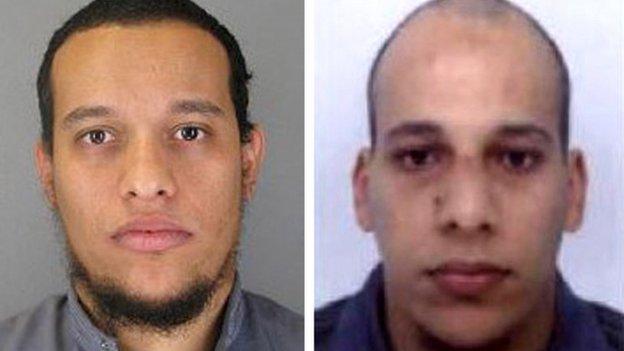
Brothers Cherif (L) and Said Kouachi
The Belgian media have reported that most of the weapons used in the Paris attacks were supplied to Coulibaly by an underworld arms dealer in Brussels for less than 5,000 euros (£3,900).
The EU's counter terrorism co-ordinator, Gilles de Kerchove, told the BBC: "It is probably too easy to get hold of military weapons in Europe."
But he said the EU had significantly improved its checks on its external borders and that it was constantly improving its response to the threat.
The bulk of Europe's more powerful illegal arms are believed to come from the Balkans, specifically from warehouses in Albania and what used to be Yugoslavia. The home secretary warned on Wednesday that north Africa could also be a source of dangerous illicit weapons.
The Schengen Agreement, which abolished physical borders between west European countries, has facilitated their proliferation into many European cities. The UK, though, is not part of the Schengen group and government officials maintain this country has correspondingly stricter border controls.
As soon as the Paris attacks took place those controls were further tightened, with armed police patrols deployed at St Pancras station where passengers arrive at the Eurostar terminal from the continent.
It could conceivably be only a matter of time before determined jihadists in Britain get their hands on the sort of high powered assault weapons used in the Paris attacks but intelligence will be key in trying to head off such a plot before it materialises.
Ever since the Mumbai raid in 2008 that killed over 160 people Whitehall planners have been rehearsing with police, special forces and the emergency services to cope with a similar event that they hope never takes place.
- Published14 January 2015
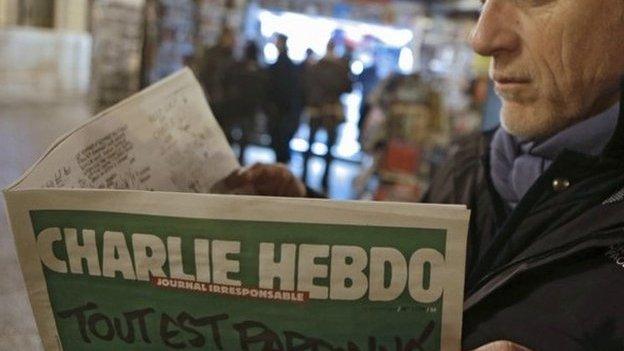
- Published12 January 2015
